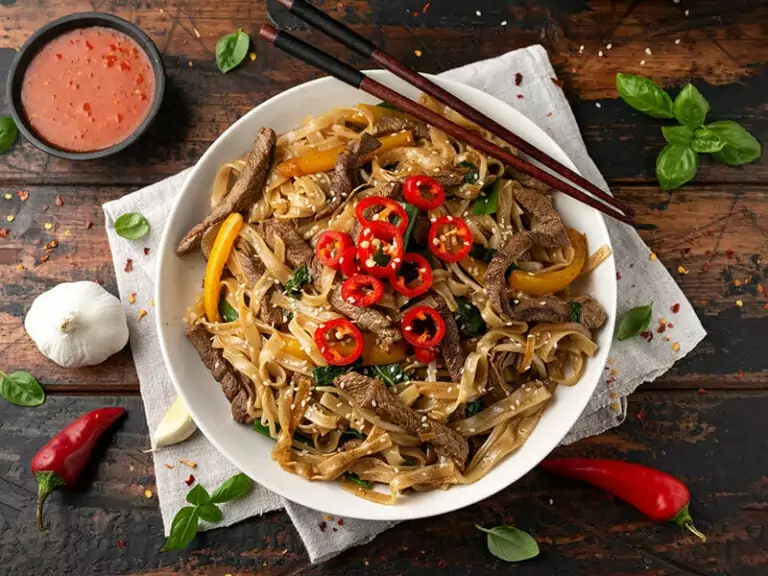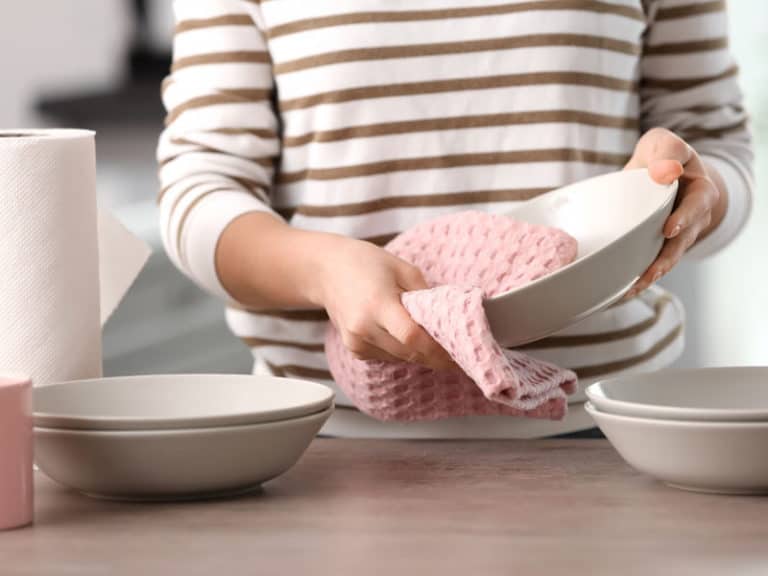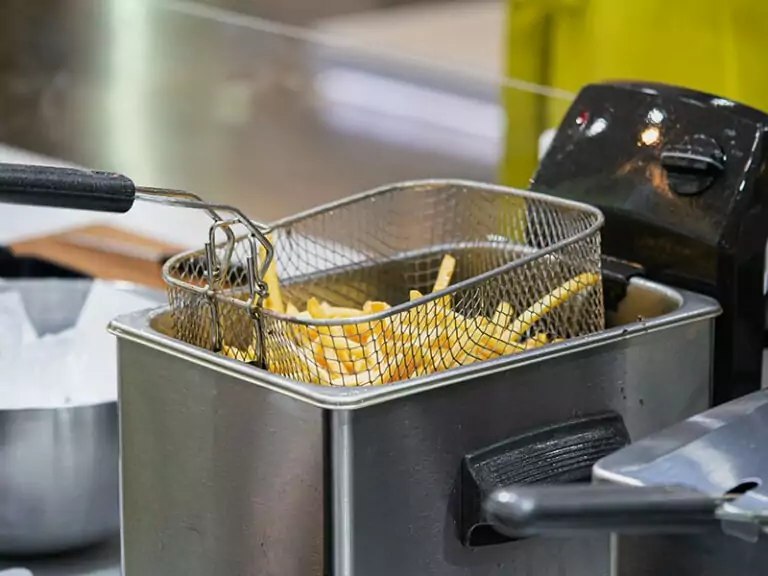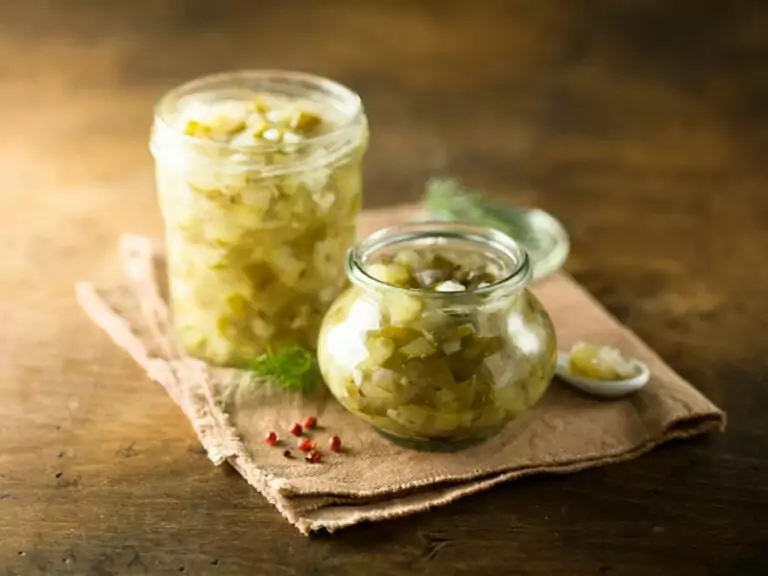Carbon steel cookware pros and cons are one of the most frequently asked questions on the Internet these days. Besides stainless steel and cast iron, carbon steel is a popular material for cooking items. It comes with both strengths and weaknesses.
That’s why you may be confused about if you should buy carbon steel cookware. To help you clear up any confusion, this article will provide an in-depth analysis of the advantages and disadvantages of carbon steel cookware. Let’s jump in now!
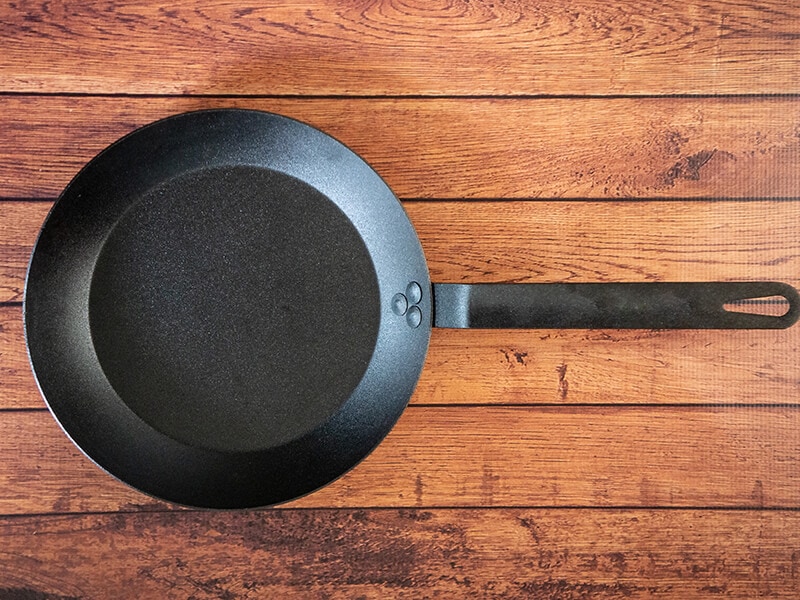
What Is Carbon Steel?
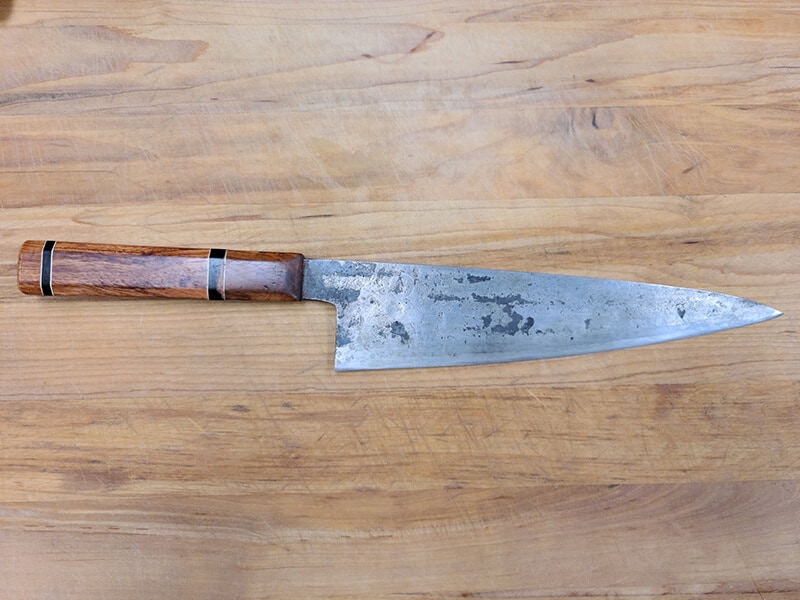
Carbon steel is one of the most common kinds of steel used in a variety of industries. This steel is an alloy of carbon and iron. As the name suggests, it’s made with a higher content of carbon (around 0.05 up to 2.1% by weight) than other kinds of steel.
There is no requirement for minimum contents of other trace elements but copper (0.4%) in carbon steel. The maximum content of manganese is 1.65%, while the figures for silicon and copper are 0.6% each.
Depending on its carbon content, carbon steel can be divided into 4 main kinds.
- Low-carbon steel: 0.05% – 0.15% carbon
- Medium-carbon steel: ~0.3% – 0.5% carbon
- High-carbon steel: ~0.6% – 1.0% carbon
- Ultra-high carbon steel: ~1.25% – 2.0% carbon
While increasing carbon content makes carbon steel stronger and harder, it also causes the metal to be more brittle and less weldable. Due to their different rate of carbon, carbon steels come with distinct characteristics and are used for various purposes.
Carbon steel has numerous applications in a variety of sectors. It is often used in constructing bridges, buildings, rails, cutting tools, etc. However, in terms of cookware, carbon steel is an important material in manufacturing knives, pans, woks, and other cookware.
Find out how carbon steel cookware is made by hand.
The Pros Of Carbon Steel Cookware
There are numerous reasons why carbon steel cookware is so popular. Let’s go through some of the advantages. For a summary, look at the table below.
Flexibility
The great thing about carbon steel cookware is its ability to be used in almost every situation. You can use it on any kind of cooktop, like gas stoves, electric stoves, and induction cooktops. It’s also compatible with other heat sources, such as ovens, grills, broilers, and even campfires.
The light weight of carbon steel is another bonus. It weighs less than most cookware materials, especially cast iron. This allows you to easily carry it around your kitchen as well as handle it during cooking.
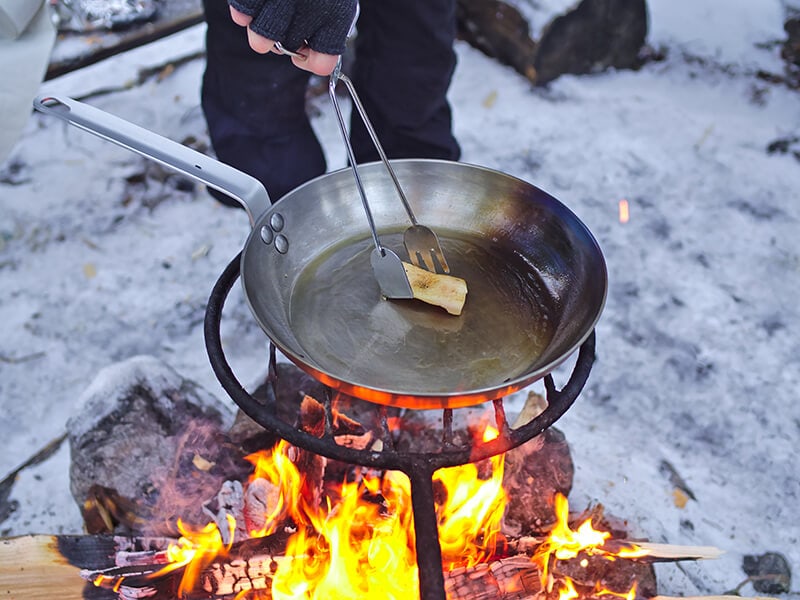
Durability
Carbon steel cookware is well known for its long-lasting. Compared to most cookware varieties, the shelf life of carbon steel cookware is much longer and can last for a lifetime. Due to its reliability, it’s able to bear common kitchen accidents, like dropping and overheating.
In addition, carbon steel cookware requires no nonstick coating. Instead, it often involves seasoning (heat oil on the cookware) to bring about a naturally nonstick surface. As a result, you don’t need to worry about added chemicals or scratches when using metal kitchen tools.
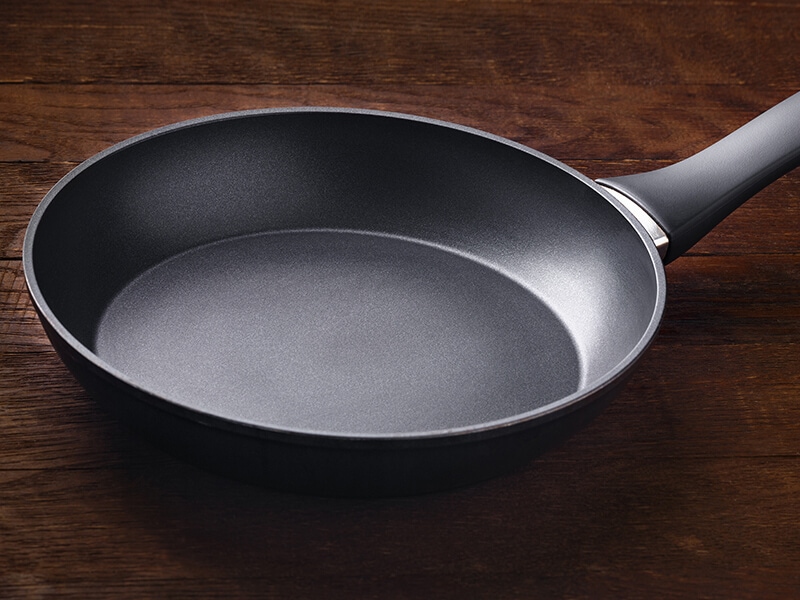
Price
When it comes to the cost, carbon steel cookware is not likely to disappoint you. While steel cookware’s price is relatively similar to cast iron, it’s noticeably more affordable than its stainless steel counterpart.
You can own a high-quality carbon steel cookware pan or pot at half (or even less) the price of a comparable product made from stainless steel.
In addition, thanks to its reliable durability, you can use your cooking item for plenty of years without replacing it. This means you can save tons of money with carbon steel cookware.
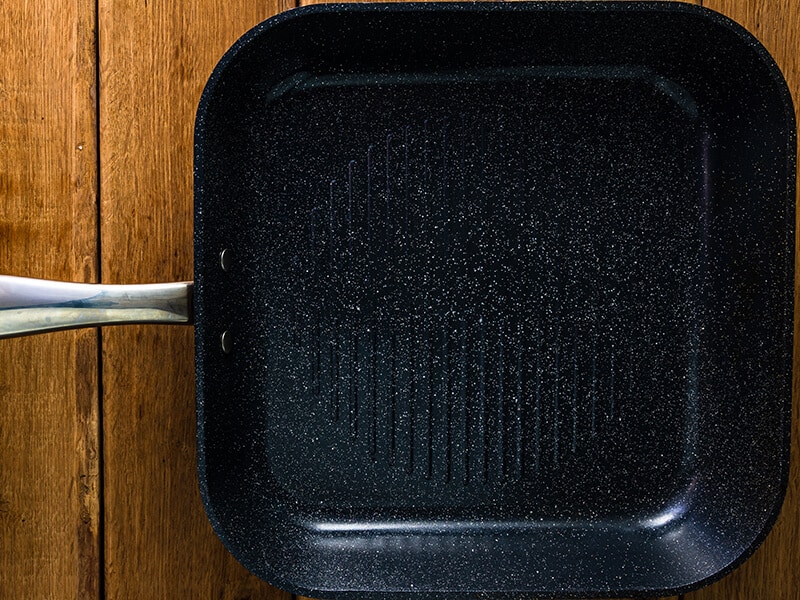
Heat
When it comes to heating, carbon steel cookware has quite a few impressive feats. It has a great level of heat resistance, which can bear 600°F-1200°F (316°C-649°C). This is why it’s commonly used in various restaurants, where cookware is often put on cooktops for a long time.
The thin and lightweight carbon steel cookware also helps it heats up and cools down much faster than a cast iron variety. By contrast, these features cause the former to retain heat worse than the latter.
For this reason, you will spend more energy maintaining temperatures with carbon steel cookware. However, low heat retention is not necessarily always a flaw: you will not need to worry much about burning food like other cookware.
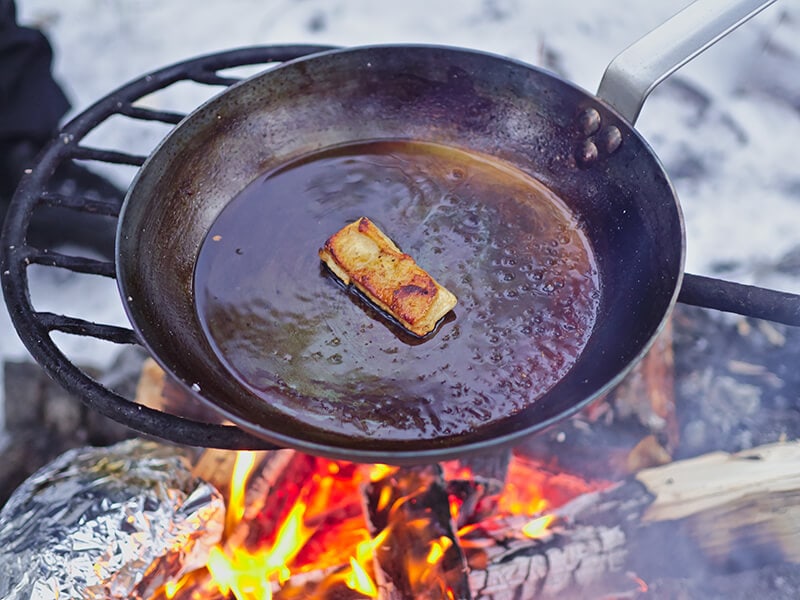
Safety
The problem with most nonstick cookware is its Teflon coatings. When cookware is heated at 500°F (260°C) or more, it may be stripped out and release some toxins, which lead to polymer fume fever (causing chills, fever, headache, and body aches) (1).
On the other hand, carbon steel cookware does not require any added chemicals but some oil to provide the same result. In other words, it’s much safer than regular nonstick cookware at high temperatures. Its two main components – carbon and iron – are nontoxic as well.
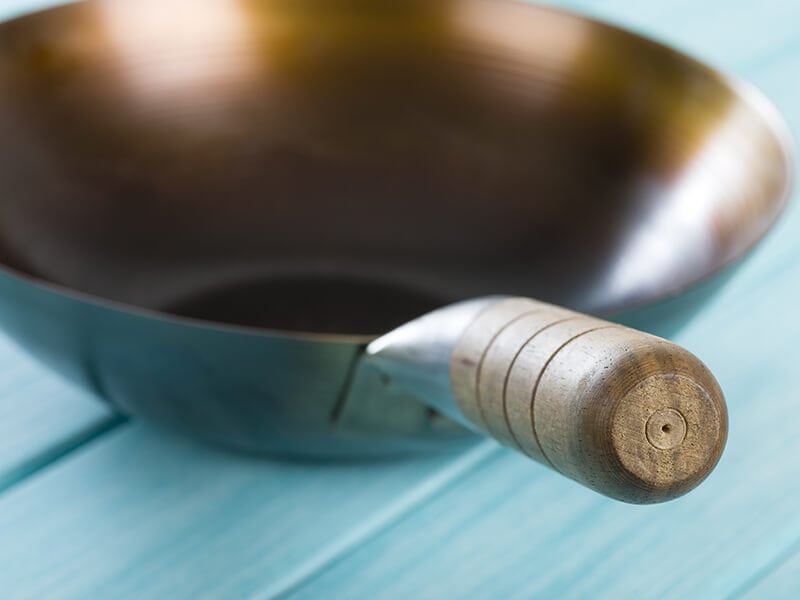
The Cons Of Carbon Steel Cookware
Despite its benefits, carbon steel cookware also causes some troubles during their cooking. For a quick glance, look at the following table.
Seasoning
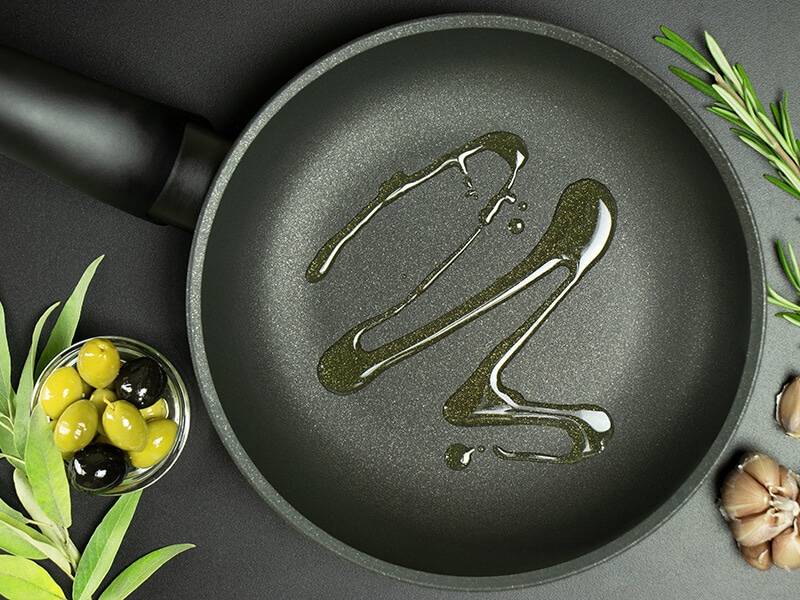
To put it simply, seasoning is a process of heating oil until it passes the smoke point and becomes solid polymers through carbonization. This protective coating helps prevent food from sticking to cookware.
When it comes to seasoning carbon steel cookware, you should go with oils that have neutral flavors and high smoke points. These oils help you season your cookware without burning them. Some common choices are canola, grapeseed, sunflower, or vegetable oils.
Well-seasoned carbon steel cookware is far superior to nonstick cookware for both reliability and safety. However, to get that outcome, it requires a decent amount of time, effort, and oil to season your cooking item.
In addition, you also need to burn it with oil at medium-low temperatures after every use to keep its nonstick coating last longer. There are many steps to take to season carbon steel cookware and maintain it. As a result, it may be hard to get into if you don’t have much time.
Save your time with this simple and quick seasoning method.
Reactivity
The seasoning that you have put lots of work into is prone to acidic foods. While things like tomatoes, pineapples, lemon juice, and vinegar are not likely to damage your cookware, they will cause the nonstick coating that you have created to peel off.
Therefore, to avoid reseasoning your carbon steel cookware, you should use non-reactive varieties, like stainless steel cookware, for recipes with acidic sources(2).
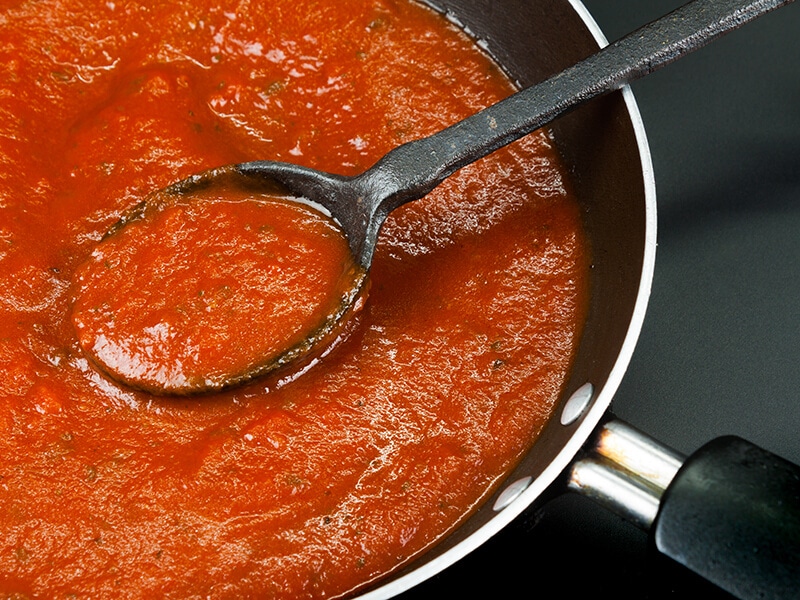
Heat Distribution
While carbon steel cookware can heat up incredibly fast, its heat distribution is not very impressive. You may not notice any significant difference in smaller cookware, but in larger ones, their ineffective conduction can be a problem.
Some parts of your cookware are likely to be hotter than others simultaneously. Thus, meats, poultry, or fish may be unevenly cooked or undercooked. As a consequence, these partially cooked dishes may not kill most foodborne bacteria, which in turn leads to food poisoning (3).
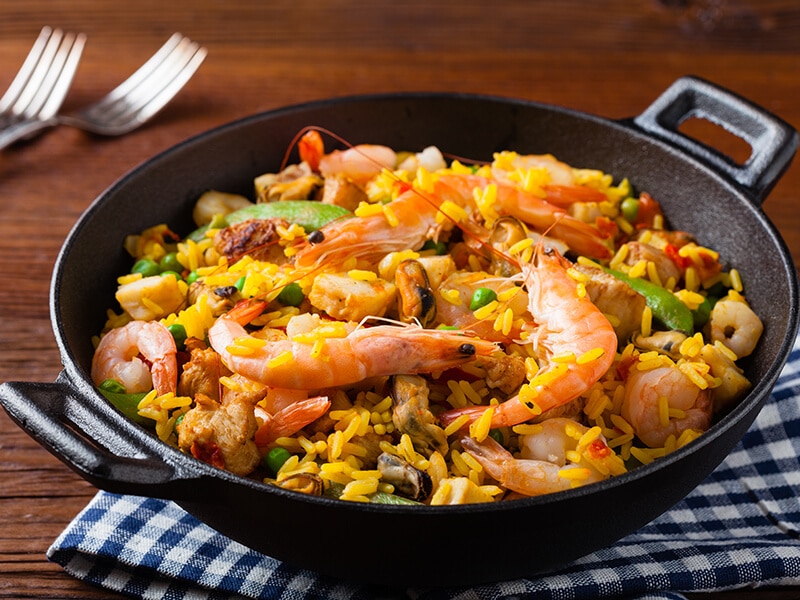
Rust And Discoloration
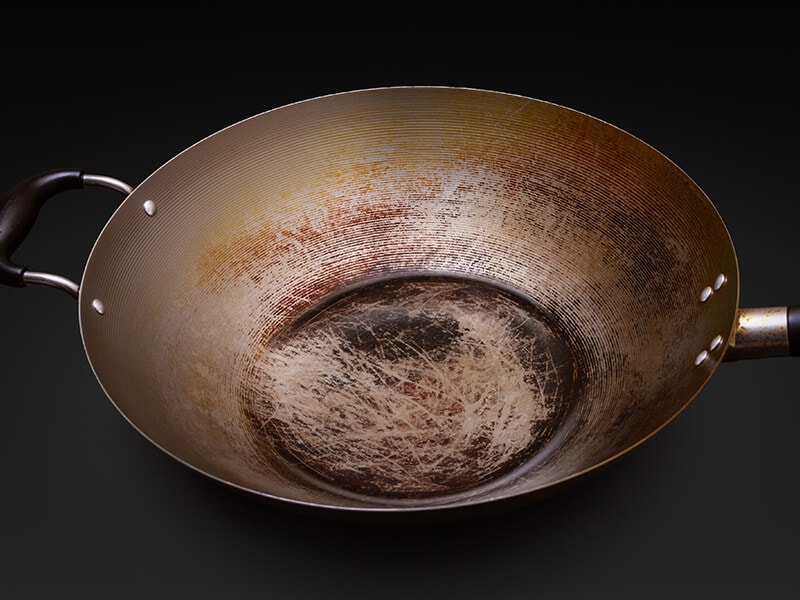
Despite its durability and reliability, carbon steel cookware can be rusted and discolored easily, especially if exposed to water or high levels of moisture for a long time.
Besides ruining the look of your kitchenware, rust can release iron into food, which is bad news for people with metal hypersensitivity. Rusted pans or pots also impart a metallic taste to what you cook in them.
These are the bad factors you should avoid to protect your cookware: using too much oil, leaving water spots on the carbon steel tools after cooking or cleaning, and storing them in a moist environment.
However, in case your carbon steel cookware is rusty, you can use this method to restore it. First, apply some coarse salt and vegetable oil to its surface. Second, use a paper towel to scrub them gently in a circular motion. Thus, reseason your cookware to bring back a nonstick coating.
Acquire skills in removing rust from your cookware with this thorough guide.
Cleaning
The dishwasher is a great invention because it can save you tons of time for daunting tasks like washing and cleaning dishes and cookware. However, it’s not the case for carbon steel cookware. Using dishwashers can damage your cooking items as well as their seasonings.
Instead, you should wash your carbon steel cookware in warm water by hand and wipe it gently. This traditional approach can extend the lifetime of your kitchen utensils.
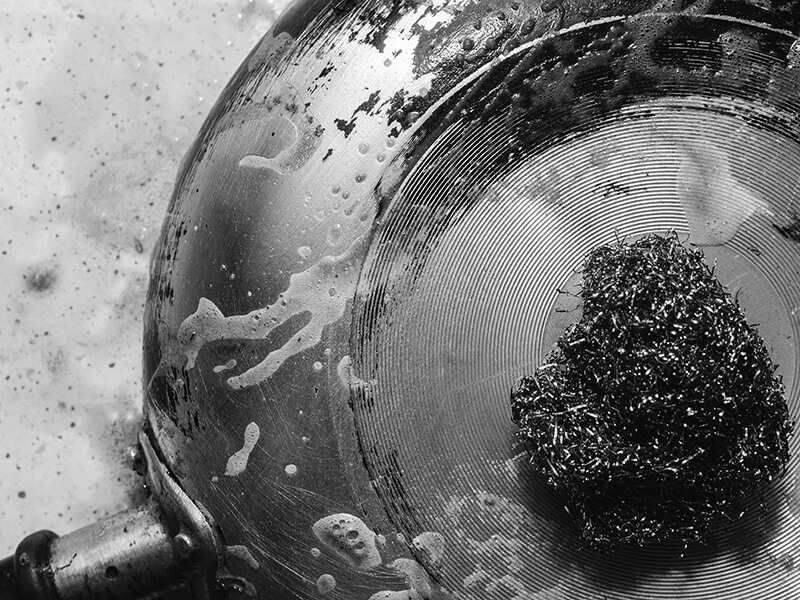
Carbon Steel, Stainless Steel, And Cast Iron: How They Differ
Let’s take a look at a comparison of the three cookware materials. For a summary, look at the table below, in which I rank them in various characteristics.
Carbon steel cookware is lighter and thinner than its stainless steel and cast iron counterparts. Due to these properties, a carbon steel cooking item also heats up faster than the other two varieties.
However, when it comes to heat retention, cast iron cookware performs incredibly the best, followed by stainless steel and carbon steel varieties. In addition, a cast iron cooking item also comes with better thermal conduction than the rest of the group.
Of the two, stainless steel cookware contributes heat worse than its carbon steel counterpart. In terms of heat resistance, the former is also superior to the latter. However, a stainless steel variety is still ranked below cast iron in the same criteria.
In terms of cost, stainless steel cookware is the most expensive in the group. Meanwhile, carbon steel and cast iron cookware are both affordable, but the former tends to be cheaper than the latter.
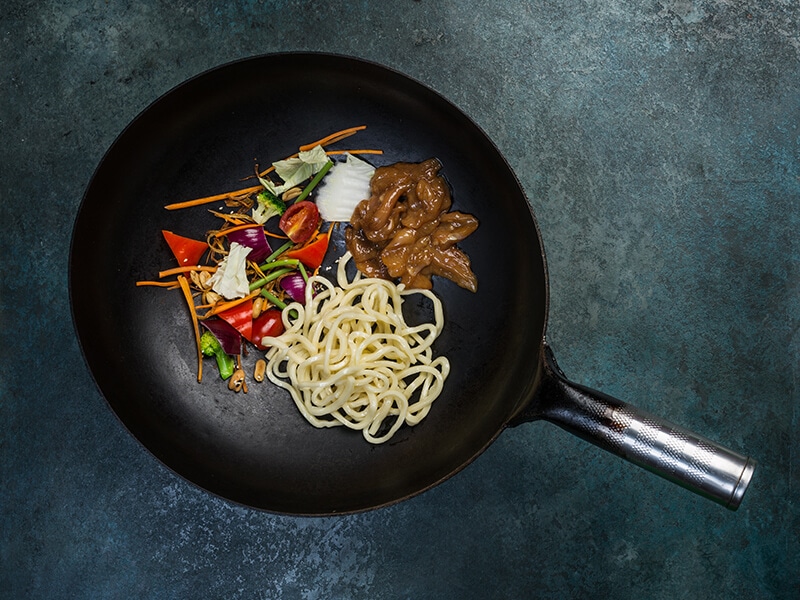
Should You Buy Carbon Steel Cookware?
After analyzing all the pros and cons of carbon steel cookware, you may still wonder if you should buy it, right?
So, if you want to find a cooking item that can rapidly heat up your food while still being light enough to handle during cooking, carbon steel cookware is a no-brainer. It comes at lower prices than its stainless steel counterpart and can also last for a lifetime.
For health concerns, carbon steel cookware doesn’t use additional chemicals for a nonstick coating, which makes it safer at high heat than many other varieties. However, you need to season your cookware and regularly maintain its surface to keep food from sticking to it.
Finally, keep in mind that carbon steel cookware can contribute heat to its other parts unevenly. For this reason, you should pay attention to your food constantly during cooking to make sure it is fully cooked.
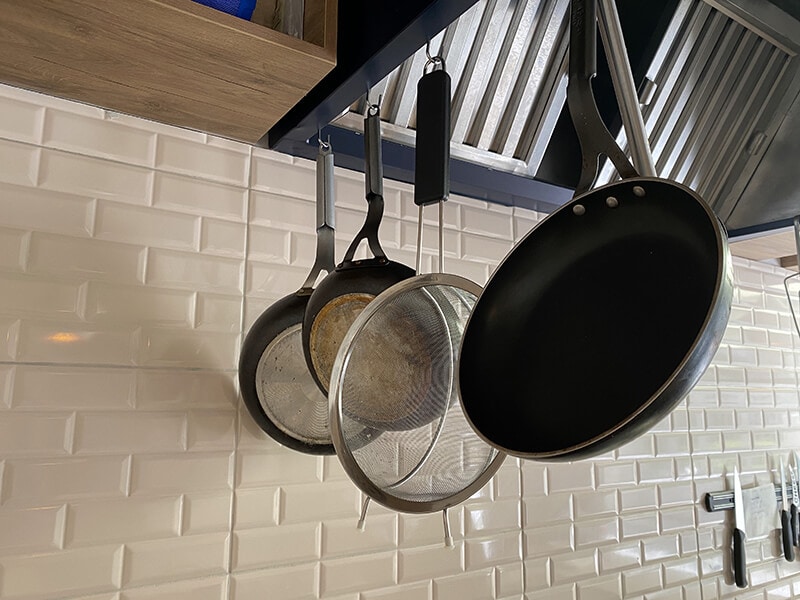
Tips To Clean Seasoned Carbon Steel Cookware
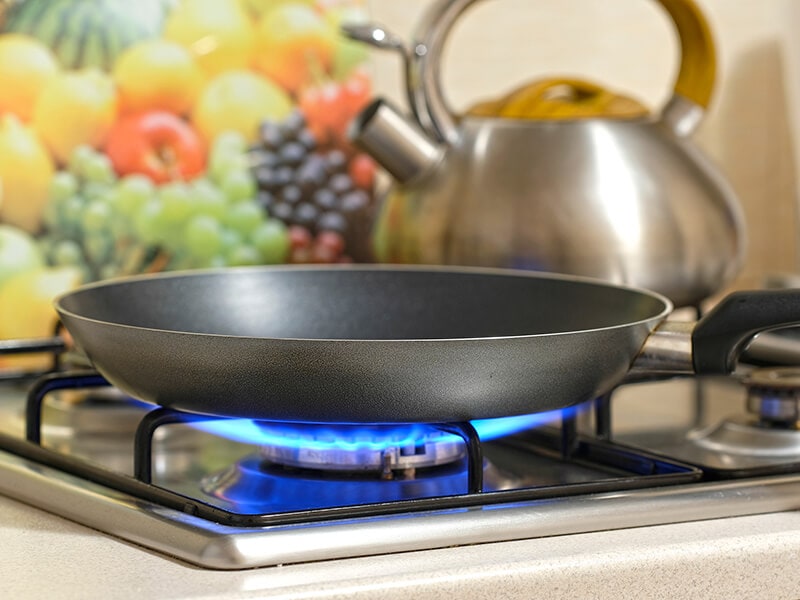
Carbon steel cookware is often seasoned instead of made with a nonstick coating. Therefore, it’s vital to learn some methods and tips to make your cookware shiny without ruining its surface. Below are some helpful ways you can consider:
- Use a paper or kitchen towel: The first and most simple method you should try is to wipe out your cookware with a paper or kitchen towel. Excess oil will be removed, and the surface of your cookware can be shiny again.
- Use coarse salt and oil: For stuck-on food bits, you can add 2 tablespoons each of coarse salt and neutral oil to your carbon steel cookware. Rubbing the salt with a paper or kitchen towel may help you remove leftover food.
- Leave your cookware a while before washing: If you wash your hot carbon steel cookware in cold water, this can ruin your cooking item and its seasoning. To avoid thermal shock, you should let your cookware cool down first.
- Don’t use dishwashers: You should wash your cookware with warm water by hand to avoid damaging your item and its surface. You can also use a non-scratching pad to make your cleaning much easier.
- Dry your cookware after cleaning: To maintain your carbon steel cookware’s seasoning, you should heat it at low temperatures for a couple of minutes to make it dry after cleaning. This also prevents any potential rusts caused by left water or moisture.
Clean stubborn food bits on your carbon steel cookware with this comprehensive video.
FAQs
There are other questions about carbon steel cookware that you may be wondering about at the moment. Let’s spend a few more minutes and find out your answers.
Cook Your First Meal With Carbon Steel Cookware
Your knowledge of carbon steel cookware is now complete! You understand deeply not only its pros and cons but also tips and tricks to clean this cookware variety shiny and properly.
My best bet at this time is that you have already decided to own your very first carbon steel cookware. If that is the case, why don’t you share with me what you are planning to cook first with it? Some start with frying bacon, while others choose cooking eggs.
Let me know your thoughts. If some of your friends are confused about carbon steel cookware, share the article to help them out. And don’t forget to season your cookware first!
References
- Coyle, D. (2022) Is nonstick cookware like teflon safe to use?, Healthline. Healthline Media.
- Margulis, C. (2020) Our kitchenware, ourselves, Center for Environmental Health.
- Department of Health & Human Services (2001) Food safety when cooking, Better Health Channel. Department of Health & Human Services.


